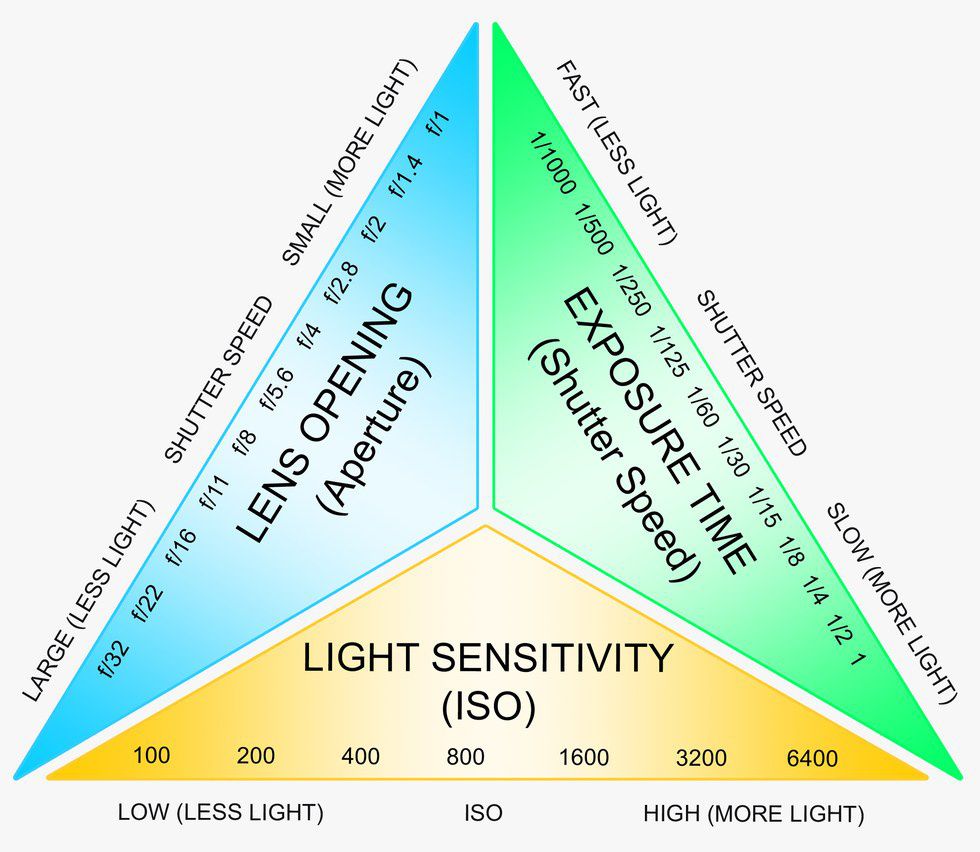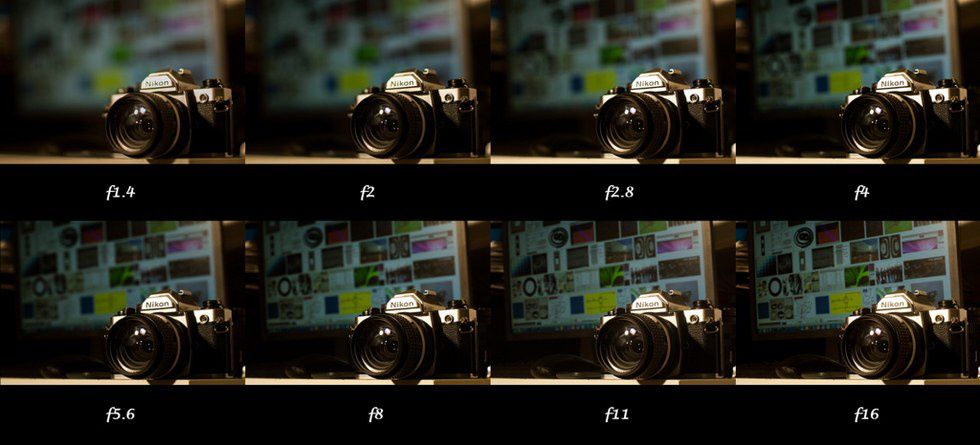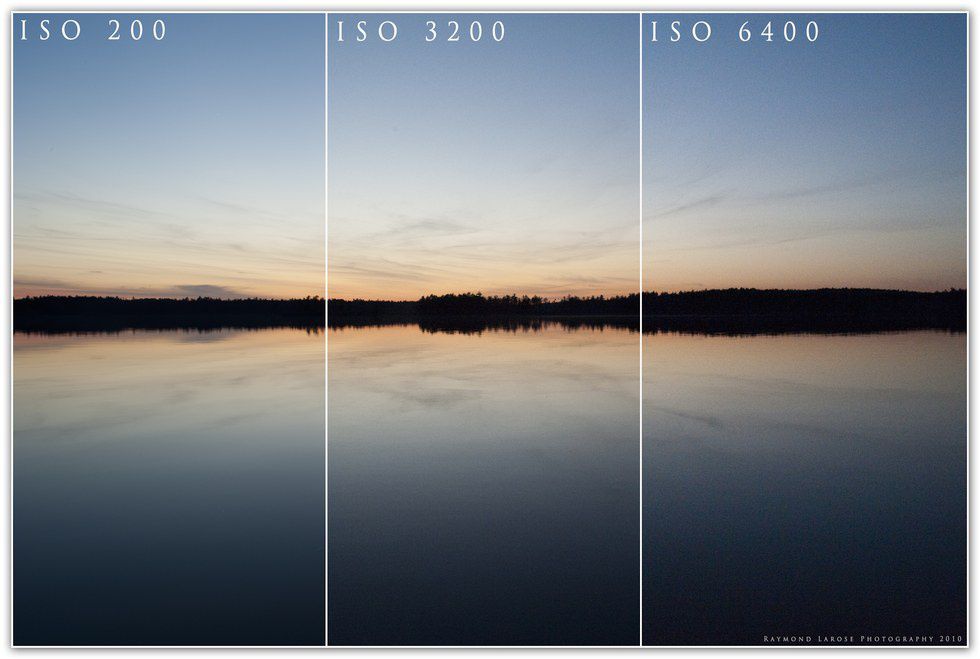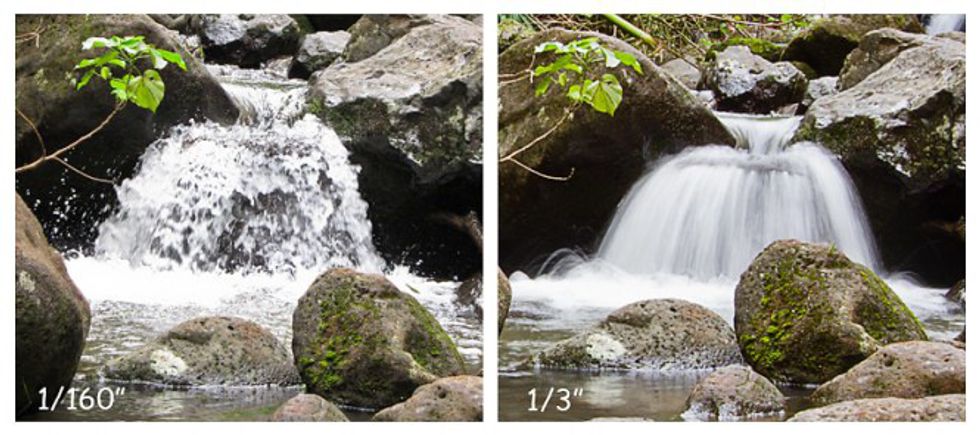The exposure triangle, also called the three pillars of exposure, refers to the amount of Aperture, ISO sensitivity and Shutter speed used in a shot. These three features are at the heart of photography and film. They control depth of field, motion blur and most importantly light sensitivity.
Firstly, aperture or f-stop can be considered the iris size of the lens. The iris size can be viewed as the more exposure used, the shallower the depth of field and vice versa. When the aperture size is set to a lower number such as f/2, the size of the iris is much wider than that of say f/32. So according to our triangle, if an image is set to a lower aperture number there should realistically only be a single subject in focus within the shot. Oppositely, if a shot is set to a higher aperture number there should be more objects or background visible giving the image a much deeper focus.
ISO sensitivity is the camera's sensors sensitivity to light. Increasing the ISO, which typically ranges from 200 to 6400, allows the shot to be brighter based on sensitivity. This feature causes one of the most taboo aspects of photography and film -- noise level. Image noise levels or film grain levels are one of, if not the most visible faults in photography and film. Although, noise can be used to create a nostalgic home-style cinema effect, the majority of the time it just insinuates poor equipment use and quality. Now, think of it this way. The more ISO used, the more noisy the image. In reality, everyone should be trying to use the lowest ISO possible to get the cleanest image possible.
Finally, there is shutter speed. Shutter speed is the amount of time the sensor is exposed to light for a single image. The faster the shutter the speed, the sharper the image. Since shutter speed directly refers to the speed of the shutter it is measured in seconds and typically ranges from 1/2000ths of second to 1/8th of a second. If the shutter speeds are extended and the subject of the photo is in motion, the camera then creates an effect known as motion blur. The most useful aspect of shutter speed is if the shots being taken continue to have an undesirable amount of camera-shake, then adjusting the shutter speed and increasing the amount of motion blur can distract from the shakiness of a handheld camera shot.
Most modern professional cameras such as DSLR’s or Mirrorless digital cameras have preset priority settings already. Presets that prioritise typically one of the three exposures in the triangle at a time. For a quick movement shot, such as a bird flying by or someone playing a sport, Shutter Speed priority would be ideal. Aperture priority and ISO priorities are bit more complex and can be understood better through more personal use of a camera. The aim of this article isn’t to make someone a professional who only uses their camera in full manual mode. That would be absurd, this article should be viewed as a basic understanding of the three main modes of exposure on affordable professional cameras.

























